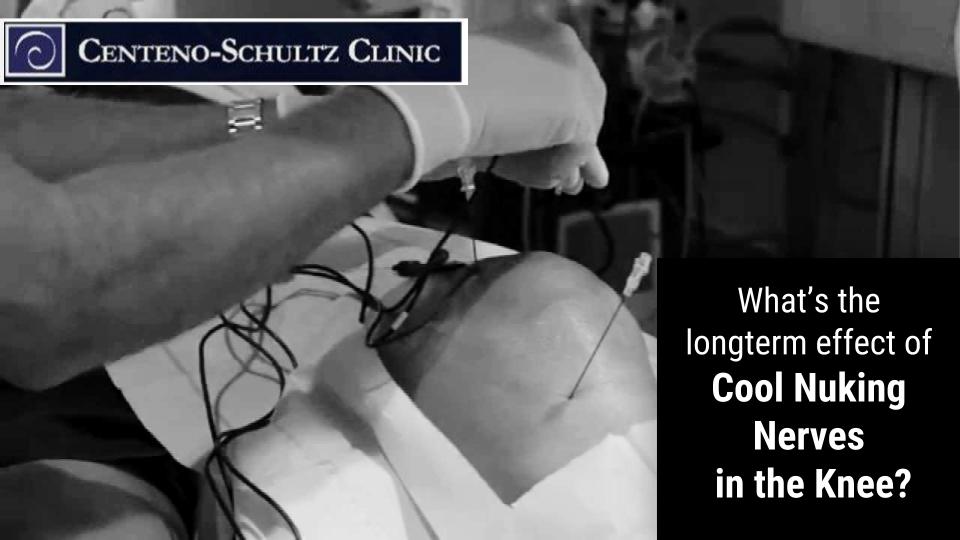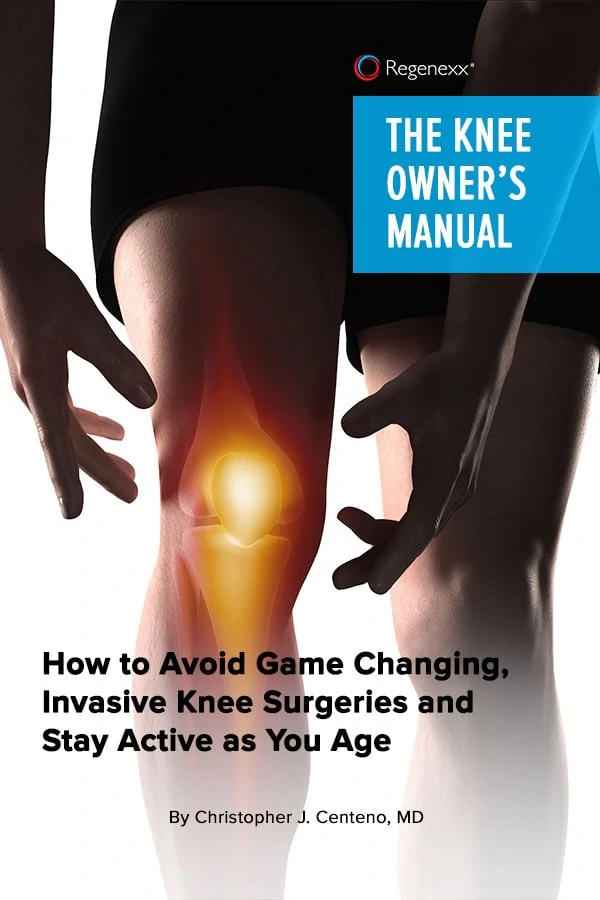The newest trend for treating the pain of knee arthritis is a nerve treatment that is meant to mask the pain…at least for a while. This procedure, a cooler-temperature radiofrequency treatment, has been full speed ahead over the last few years, so it must be a good idea, right? Meaning, it works, it lasts a long time, and there are no better options out there? Well, not necessarily. Let us explain.
What Is This Nerve Treatment for Knee Arthritis?
This nerve treatment for knee arthritis uses radiofrequency (RF) energy. You may have heard of radiofrequency ablation (RFA), which destroys, or ablates, tissue using thermal, or heated, energy. This newer RF treatment, however, utilizes a “cool,” or lower temperature, radiofrequency energy in which the surgeon positions a probe near the pain-signaling nerves in the arthritic knee and then zaps the nerves with a type of electromagnetic energy. Instead of destroying or killing the nerve like an RFA, the idea is that this treatment dulls the pain signals from the nerve.
Does This Nerve Treatment for Knee Arthritis Work?
Not really. In fact, it’s likely to make arthritis worse. Why? Dulling the nerve signals disrupts the body’s normal instinct to protect the arthritic joint as it can no longer feel. This is called a Charcot joint. Diabetics whose nerves have died experience this. It causes terrible damage and even disfiguring of the joint. This occurs because a patient who no longer has the nerve signals to allow for that instinct to protect the joint cannot feel when there is pain that would indicate a problem, and they simply continue to damage the joint.
What Some of the Research Shows
We’ve seen some studies on this “cool” radiofrequency treatment, and all are concerning.
One study found that the treatment decreased knee pain (only by 50%) in only 35% of the patients who had the procedure for their knee arthritis. Another study found the duration of relief lasted only three to six months and was no better than a steroid or anesthetic injection. Taking this a step further one study suggested that a local anesthetic by itself was just as effective at alleviating pain as a steroid and anesthetic combo. So one can deduct that the “cool” RF treatment is no better than a local anesthetic alone. Interestingly, but maybe not surprisingly, the manufacturer of the RF devices sponsored its own study and concluded that the outcomes of the treatment exceeded those of steroid and anesthetic injections, but clearly this isn’t supported by other studies.
None of these studies were high-level, blind studies. Meaning none of them were designed so that patients didn’t know whether they received an actual procedure (test group) or a sham procedure (control group). So clearly there’s more research that needs to be done here.
“Cool” RF May Damage the Nerve More Than an RFA
Using a chicken breast to study lesion size (the standard technique for checking lesion size), one study pitted the “cool” RF treatment against the higher temperature RF. The “cool” treatment actually resulted in a larger lesion. And another report showed that these lesions were large enough that they appeared on MRI, indicating tissue damage occurred outside of just the nerve.
There Is an Option Out There That Won’t Damage Nerves
An interventional orthopedic (IO) physician can treat knee arthritis using an injection of platelet-rich plasma (PRP), which is full of growth factors that can help with tissue repair. Solid research shows PRP is effective in treating mild to moderate arthritis. Watch Dr. Centeno’s video below to learn more about PRP:
In most more-severe knee arthritis patients, your IO physician can use precise same-day bone marrow stem cells that may be able to keep pain at bay for many years. More on this in Dr. Centeno’s video below:
So research is showing this radiofrequency nerve treatment for knee arthritis really doesn’t work all that well and may even make arthritis worse, and pain relief, if any, doesn’t last very long. In addition, there are other options, such as injections of your own PRP or stem cells, and the added benefit to these treatments is that they won’t damage or kill your nerves.

